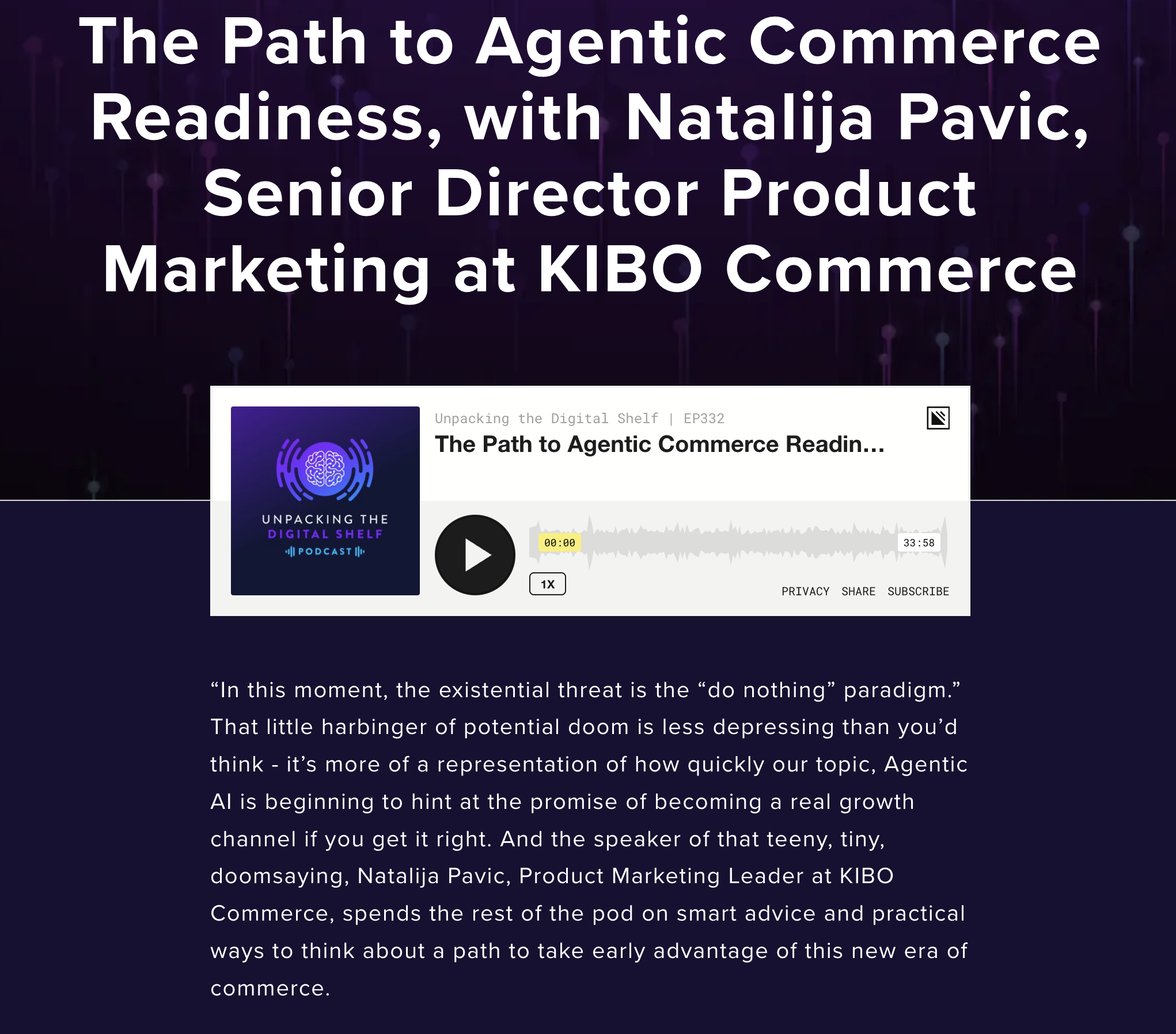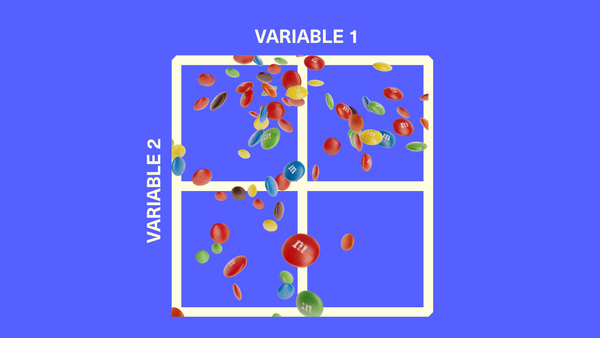Have Retailers Lost Discovery to AI for Good?
Retailers have spent the last decade optimizing every pixel of their digital properties. Personalization engines, A/B testing frameworks, predictive algorithms—millions invested to control what shoppers see at every touchpoint. Does any of that matter anymore?

Retailers have spent the last decade optimizing every pixel of their digital properties. Personalization engines, A/B testing frameworks, predictive algorithms—millions invested to control what shoppers see at every touchpoint.
Does any of that matter anymore?
Today I'm sharing some snippets from one of my favorite podcasts, Unpacking the Digital Shelf podcast, hosted by one of my ecommerce besties, Lauren Livak Gilbert, and Peter Crosby from the Digital Shelf Institute. In a recent episode they interviewed Natalija Pavic, Senior Director of Product Marketing at KIBO Commerce. Natalija addressed something that's been bugging me for months: we can't just add AI features to existing commerce experiences and call it a day.
Consumers are already shifting their research, discovery, and comparison activity into other spaces. So what happens when consumers stop interacting with your website, your app, or your carefully crafted product pages?

Agentic AI Becomes the New "Pane of Glass"
Natalija describes the shift from omnichannel to what she calls "commerce anywhere"—consumers who want to speak to their phone and have Tide pods show up on their doorstep, or get notified when they're running low on lotion. The delivery mechanism becomes commoditized. What consumers actually want is one central place to funnel all their questions.
That central place is agentic AI—whether that's a retailer's own chatbot like Amazon Rufus, cross-retailer CommerceGPTs (AI agents that work across multiple retailers' catalogs to help shoppers research and buy products), or third-party answer engines like ChatGPT and Perplexity.
Did you know leading retailer media networks drive 85% of their ads revenue through mid- and long-tail advertisers?
Mirakl Ads provides full funnel ad formats tailored to both 1P and 3P advertisers, leveraging unique AI-capabilities that provide unprecedented levels of relevance and engagement.
Retailers who want to capture ad spend from the long tail of 3P marketplace sellers use Mirakl Ads in their tech stack.
Here's the problem: personalization engines currently own the "pane of glass" in commerce. These systems rely on predictive algorithms that assume they control the interface—the website, the product pages, the entire customer journey. With generative AI agents, that assumption breaks. You can't plug predictive personalization into a conversational interface the same way. The technology architecture has to be completely rethought to work in a distributed way, connecting to many different touchpoints instead of controlling one central display.
I'm not sure how many retailers realize what they're about to lose.
Even without fully agentic shopping journeys, consumers are already spending significant time in the research and consideration stages inside LLMs rather than on retailer websites. Referral traffic to websites is falling. I spoke with two brands in the past couple of days who told me their Amazon PDP traffic is down 20% with no other plausible explanation besides either 'the economy' and/or AI subsuming large portions of research and discovery behaviors that previously happened on-site.
Your carefully merchandised category pages, strategic product placements, personalized homepage—none of it matters if shoppers never see it.
But this doesn't have to be a race to the bottom. It does require retailers to rethink their value proposition—especially online.
If your site's primary value was being a place where consumers research, discover, and compare products, LLMs are doing a better job of that right now. So what do you uniquely offer?
Exclusive products? Convenient store locations? Unmatched expertise in a category? A brand experience that can't be replicated through a neutral AI interface? Curation that reflects specific taste or values? The ease of doing business with you as a retailer?
The retailers who figure this out and double down on that messaging will stand out. But it requires honest introspection about what you're actually good at, beyond just having a website.
The "Do Nothing" Risk
So if the interface is shifting and the value proposition needs rethinking, what should brands and retailers actually do?
Natalija points out that American retailers face pressure from every direction: international players, marketplaces, ultra-cheap competitors like Shein and Temu. In that environment, the only path forward is innovation—both in how you deliver goods and services, and how you communicate your brand's value to customers.
Natalias advice: lean into digital innovation. Experiment with these technologies now so you can figure it out earlier rather than later.
I couldn't agree more. The future is changing right in front of us. The way we've shopped in the past is evolving rapidly. The retailers and brands who lean in with curiosity—who get messy trying out these experiences themselves, who think critically about their unique value proposition as the discovery layer changes—those are the ones who'll figure this out.
Read more from me on related topics:






